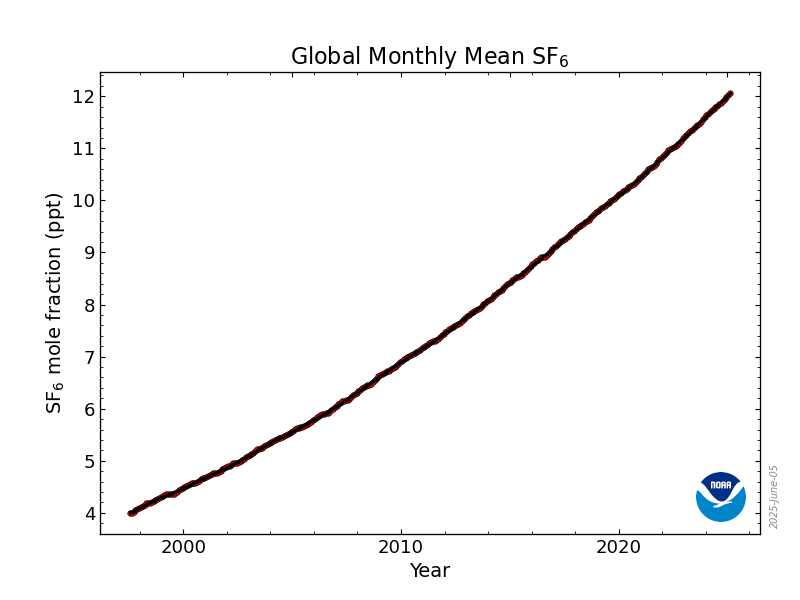Global C02 at record levels (again)
- richardmartinbarto
- Jun 25
- 2 min read
This is my occasional reminder that carbon dioxide levels continue to increase rapidly - entirely a result of human-caused emissions. This year, they will peak at around or just over 430ppm, with a slight decrease over the coming months as the Northern Hemispheric growth season gets underway (and sequesters C02 from the atmosphere into biomass).

A continuous record of carbon dioxide concentrations in the atmosphere has been kept at the NOAA (US National Ocean and Atmospheric Administration) observation site at Mauna Loa on the Big Island of Hawai'i since 1958. The observatory is located at 3394 m altitude on the side of an active volcano, situated far from major landmasses and above the lowest layers of the atmosphere where pollutants and aerosols tend to get trapped - this makes it an ideal location for remotely monitoring humanity's impact on the atmosphere.
Concentrations of other greenhouse gases in the atmosphere are rising too. Methane (CH4), nitrous oxide (N20) and sulphur haxafluoride (SF6) are steadily rising in concentration. As a general rule, methane traps ~30 times more heat than carbon dioxide, nitrous oxide traps ~ 270x more, and sulphur hexafluoride traps a staggering ~23,500x more(!). Methane is short-lived in the atmosphere, typically lasting ~ 12 years before it is broken down into carbon dioxide and water. However, nitrous oxide lasts ~114 years, and sulphur hexafluoride lasts ~ 3,200 years.
Methane sources include coal, natural gas and oil production, but landfill sites and livestock (though fermentation of food in the stomach and production of methane, which is then released through belching) are also major sources.

Nitrous oxide is produced as a byproduct of agricultural fertilisers and manure. Landfill sites and combustion of fossil fuels in power plants and transportation, are also key sources.

Sulphur hexafluoride is primarily used in electric power systems, specifically in circuit breakers, gas-insulated substations and other switchgear used in high voltage transmission systems.

Due to the shear volume of carbon dioxide we emit, C02 still provides the largest contribution (~76%) to global warming, even if it isn't the most potent greenhouse gas. Methane (~16%) is the second biggest contributor, followed by Nitrous Oxide (~6%) and fluorinated gases like sulphur hexafluoride and hydrofluorocarbons (~2%).
The messages delivered by these graphics are often lost in the flood of other things going on in this busy and geopolitically complex world we live in. So, although I'm not presenting any new information here, this is a reminder that while wars continue to be waged around the world, disputes arise and are resolved, and the average person continues with the struggle of daily live, don't forget that greenhouse gas concentrations continue to increase in the atmosphere - at an increasingly rapid pace - and the atmosphere continues to warm. The problem is just getting started.




Comments